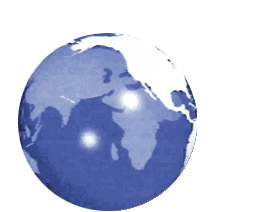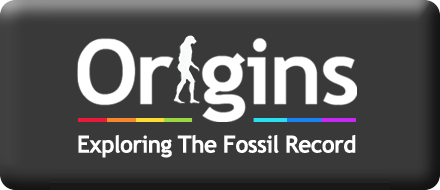 |
 |
APPENDIX 2 - TWYFELFONTEIN SITE REPORT BY SVEN OUZMAN |
2/18 |
Site P on Scherz’s Map (Site 2 in
Figure 2)
S 20° 34’ 15’’ / E 14° 22’ 11”
Site Description
The Zeremonienplatz consists of a large jumble of rock blocks at the foot of the upland in a small valley at the head of and to the north-west of the Twyfelfontein Valley, 3km from the main site complex. The site’s location is today unmistakable because the very intrusive and archaeologically insensitive ‘Twyfelfontein Country Lodge’ has been built directly behind the Zeremonienplatz, which one has to walk through via stone and cement pathways to get to the Lodge. There are numerous natural passageways through the approximately 18 stone blocks as well as a small cave. A seasonal watercourse runs around the western base of the rocks. There are good views to the north and NE. The dry waterfall to the west is meant to have an engraved site located above it.
Associated Archaeology
The building of the lodge has severely disrupted the surface and sub-surface archaeology of this site, which used to have an extensive scatter of quartzite and hornfels stone tools. As far as can be determined there was no Archaeological Impact Assessment conducted. In the cave section of the site there seems to be a good depth of archaeological deposit – perhaps as much as 1m of soft, fine material.
Description of the Zeremonienplatz’s rock art
Main image cluster: On one of the largest vertical and horizontal rock expanses is the densest and most extensive engraved image cluster measuring 5.4m x 1.6m. The subject matter is primarily fine pecked infill animals, animal spoor, human footprints and cupule-like motifs. The ‘cupules’ are arranged in single and parallel horizontal rows of, for example, 4 rows with 24, 27, 28 and 25 individual cupules. The cupules are between 6mm – 22.5mm in diameter and 3 – 18.5mm in depth. These ‘cupules’ may represent the work of Khoekhoen herders, who also made finger paintings with the tips of their fingers and arranged these fingertip marks in similar parallel rows. Also, the five handprints – the two smallest measure 100mm and 70mm - may also represent Khoekhoen work as they often made handprint with paint by smearing the palm and fingers with paint and then pressing the hand to the rock face. This engraved variant is rare. Animal imagery includes antelope (< 5), elephant (< 6); giraffe (< 2); rhino (<2) and zebra (<5). Of the at least 20 human footprints there is a huge 440mm x 210mm 6-toed example engraved in fine-pecked outline. There are over 40 animal spoor, of which 6 are clearly feline, 1 zebra and 1 possibly rhino. The tip of all the antelope spoor points downwards, towards the ground while the other spoor are the ‘right way’ up. One human footprint has 3 cupules in a row engraved at its heel. Many of the equid engravings have a very long snout – like some of the Brandberg’s Domschlucht engravings. There is one possible phallus motif depicted on the main cluster (see
Figure 7), and on the section where the archway begins there are two rows of 6 and 2 phallus-like motifs as well as a possible spoor engraving and a recent ostrich engraving.
Archway: There is a pecked antelope spoor and 3 cupules (17mm – 67mm diameter and 5.5mm – 28.5mm deep) and a circular pecked outline. On the opposite side is a modern engraved butterfly.
Figure 67
Click for Enlargement
Image cluster past the Archway (
Figure 67): This is viewed from the central area within the archway and measures 2.3m x 2.1m and which consists of three very large giraffe (largest 1130mm x 310mm) in a deep pecked outline and lighter pecked infill technique. The leftmost giraffe has a very exaggerated and thin 560mm long neck and is superimposed on top of an equid, probably a zebra.
There is also 1 thin giraffe, 4 ostrich, 11 zebra, 2 other equids, and some possible jackals with two of these being joined in mid-abdomen, giving the impression of a mirror-imaged animal.
Wall outside the cave: There are three distinct patches of parallel rows of horizontal lines of deep, sharp, cupule-like lines and possibly a fourth such row. Except for one small group, the larger punctates are all above smaller such punctates. The middle such cluster is 1.2m x 0.5m. These I term ‘punctates’ rather than cupules because they are not round but tear-shaped and have sharp edges and a deep, pointed interior. They are about 15% longer than they are wide. They measure between 2.5mm – 15.5mm in diameter and are between 1mm – 11mm deep. Immediately above the inner cave is also a deep pecked outline and infill zebra.
Cave: There remains the white torso of a long-necked equid, perhaps a ?zebra, on one of the onion-skin-like flakes of the small (2.1m x 1.5m x 1m) cave. There are some other smudges of red suggestive of the torsos of human figures. There may have been more Bushman rock paintings on rock slabs that have since fallen off the cave wall.
West side of main image cluster: Behind the main image cluster there is a jumble of smaller rocks with imagery such as a boulder bearing five pecked-infill ostrich, one of which has a very wiggly neck that seems to join to an animal head. Another ostrich is joined to a squarish motif and three possible human figures are close by. Further, there is one block-like animal and two indeterminate pecked outline animals. There is a heart-shaped and a square motif. On a facing rock there are five very weathered equids. At the back of an adjacent boulder are two pecked infill equids and a long line.
Eastern side of the site: Here the imagery is most dispersed. There are three very finely pecked-infill equids and a possible roan antelope with very deeply pecked outline. There is one weathered and fat 360mm x 230mm eland that faces two fine partially pecked-infill ostriches and some scrape marks. Facing the main image cluster is a big 940mm x 650mm bull giraffe in deep pecked-outline and partial pecked-infill. The peck marks are very punctate. A second giraffe and a good pecked infill rhino spoor on top of the giraffe are associated with a feline spoor. Possibly a third and smaller giraffe.
Threat(s) to site: As mentioned, the building of the lodge has done considerable physical violence to the site’s archaeological integrity. Not only does no Archaeological Impact Assessment appear to have been done, but the building of the pathway through the site has destroyed a great deal of archaeological evidence. The metal ‘Twyfelfontein Country Lodge’ sign has been fixed into the rock of the site and this is likely to cause conservation problems later. The physical rock engravings are also threatened by an algal growth and some images have been re-pecked by non-Bushmen in modern times. There are also several names scratched in stone on the site. The west and east side suffer from severe water washing. The lodge has also done conceptual violence to the intellectual and cultural status of the Bushmen by, for example, having two metal sculptures of Bushmen in its garden. The ‘Original rock engravings’ sign is also patronising and nowhere is adequate information on the site provided nor a proper code of visitor etiquette. The use of rock painting motifs in the detail strip of tiling in the Lodge’s toilets is also extremely insensitive to the Bushmen.
→
A Survey into the Relationship between
Animal-Engravings & Cupules
→
The Rock Art of Twyfelfontein
→
The Rock Art of Namibia
→
The African Rock Art Archive
→
Bradshaw Foundation
Like us on Facebook & Follow us on Twitter to receive news & updates:









